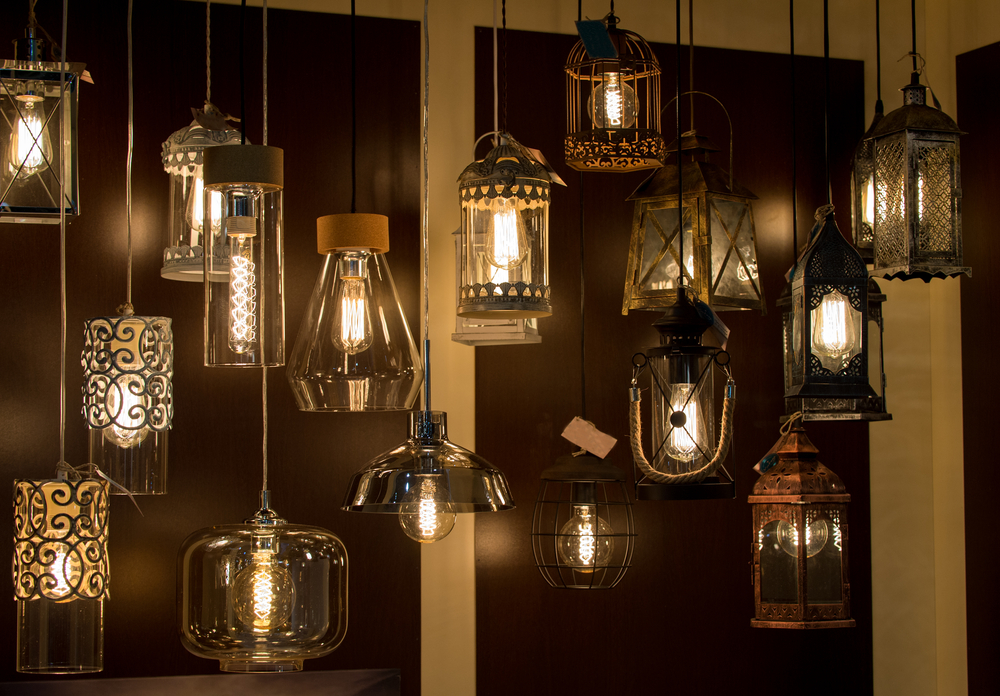A Complete Guide to Home Lighting Options

Because light is what we use to see with, we often don’t notice the lighting itself. But lighting can make a huge impact on how we enjoy our homes. But how do you know what the best lighting options are? You have to choose everything from the light fixtures to the type of bulb that is best.
Categories of Lighting
There are three different types of lighting that go into a home. Any home lighting will fall into one of these three categories:
- Task
- Accent
- General
Task Lighting
Task lighting is lighting that is used to light an area used for work. For example, the light over a stove or a sink is task lighting. So is a desk lamp, a light illuminating a work bench, or a vanity light used for applying makeup.
Accent Lighting
Accent lighting is similar to task lighting in that it is designed to illuminate a smaller area of space. However, accent lighting, by contrast, lights an area of a room. An example of an accent light is a standing lamp located behind a chair. It’s accent lighting because it illuminates that area of the room but isn’t being used to light a specific work area.
General Lighting
General lighting is the primary light. The overhead light in the kitchen, for example, is general lighting. Natural light can also count as general, or ambient, lighting. General lighting is any light that isn’t illuminating something specific.
Categories of Light Bulbs
There are a variety of different types of light bulb. They each offer a different type of light range and are best suited for different rooms and your own lighting preferences. Some people prefer a warmer light over cooler light. When choosing a light bulb, you also need to consider the bulb’s purpose. Bathroom lighting should be rated safe for damp conditions, for example. Light bulbs used in task lighting may need to be brighter than general or accent lighting.
Smart Bulb
Smart bulbs are LED light bulbs that can be controlled remotely, usually from an app. This is convenient because you can adjust the brightness of your smart bulbs depending on your needs and you don’t have to get up to do so. You don’t even have to be in the house!
LED Bulbs
Not all LED smart bulbs are smart bulbs. LED bulbs, even the ones that aren’t smart bulbs, are still excellent choices because they are more energy efficient and can last a long time. They also have a range of light types, meaning that they can be cooler light, warmer light, or even mimic the light coming in from outside.
Halogen Bulbs
A halogen light bulb is a type of incandescent light bulb that produces light in the more neutral part of the light spectrum, closer to natural light than regular incandescent bulbs. You should be careful if you’re handling a halogen bulb while it’s hot because oils from human hands can damage the bulb’s glass.
Incandescent Bulbs
An incandescent light bulb is warm light bulb that is popular due to low costs. There is a downside of using incandescent bulbs, however. The bulb puts off a lot of heat rather than putting that energy toward illumination and therefore burns out more quickly than other types of bulbs.
Fluorescent Bulbs
Fluorescent bulbs are more energy-efficient than halogen and incandescent bulbs but not as energy-efficient as LED bulbs. They also last a bit longer than halogen and incandescent bulbs but not as long as LED bulbs. Unlike incandescent and halogen bulbs, fluorescent bulbs can come in a range of lighting options, from warmer to cooler to natural tones.
Categories of Light Fixtures
Lights can be affixed within the home in a variety of different ways. Some are attached to the ceiling while others are connected to the wall. Yet others are free-standing or are small enough to sit on top of a surface. Different fixtures serve different purposes. Ceiling lights, for example, are more often for general lighting but, depending on the location can also be used for task lighting.
Ceiling Lights
Ceiling lights can either hang from the ceiling or be affixed flush to the ceiling. Chandeliers can be a nice option for dining rooms, living rooms, and entryways, while pendant lights are more popular in bedrooms, bathrooms, kitchens, and on porches. Flush lights are common in hallways, closets, and bathrooms, but can be used in a variety of rooms. Some ceiling lights can come with a fan. Ceiling lights can also be recessed into the ceiling
Wall Lights
Bathroom lights are often wall lights. Sometimes they’re mounted on the wall above a mirror or are wall sconces. Some bathrooms may even have LED lights built into mirrors on the wall. Wall sconces can also look good in hallways and entryways.
Lamps
Lamps are free-standing lights that can be placed anywhere. They can be tall floor lamps or shorter lamps that can sit on tables and desks. These lights are most often used as accent lighting or task lighting.









